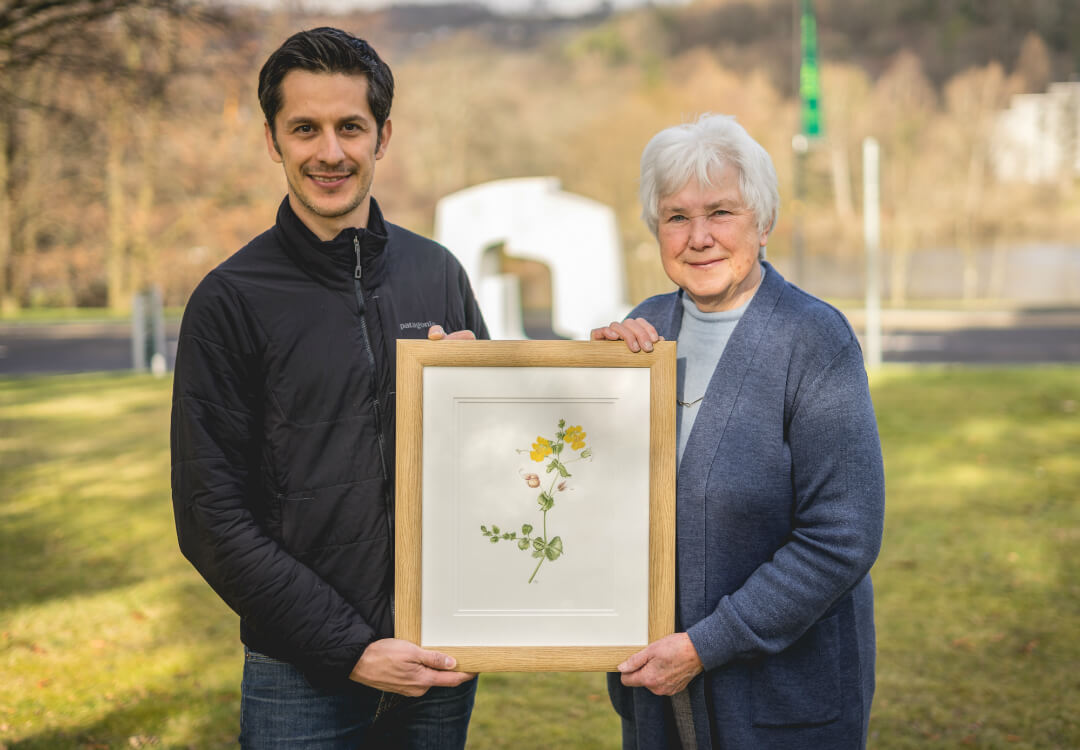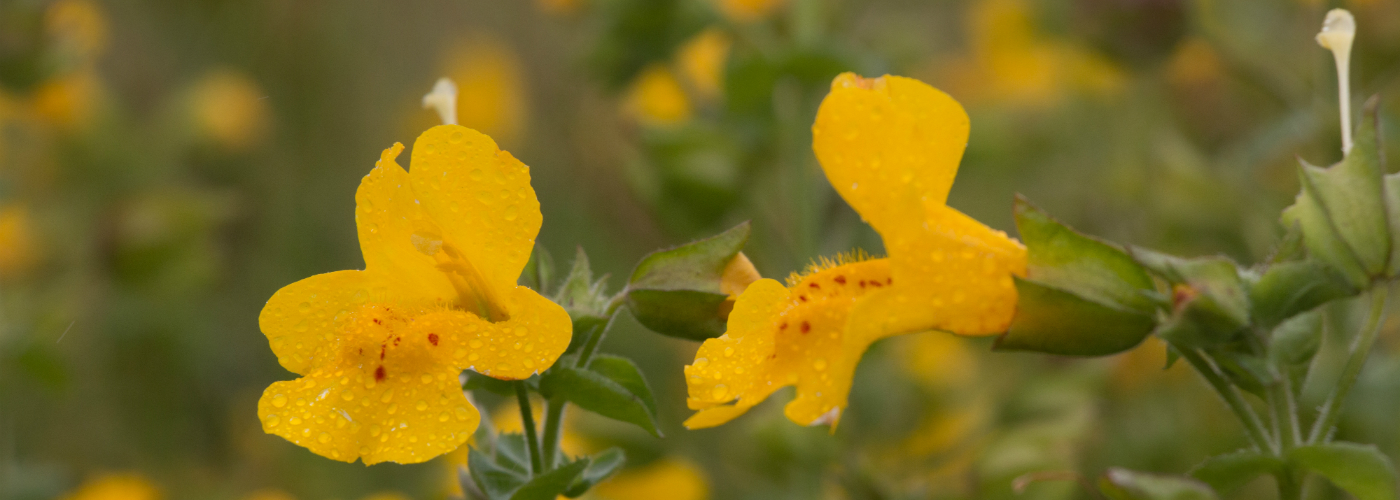One of Stirling’s first-ever students has been reacquainted with the University after creating stunning paintings of one of its recent discoveries – the Shetland monkeyflower.
Janet Watson, who was part of the first cohort of students when the University opened in 1967, presented a watercolour of the plant’s flowering stem to Dr Mario Vallejo-Marin, who discovered the plant while conducting fieldwork in the islands.
A second artwork – depicting the distinctive yellow flower with small red spots – is to form part of a special exhibition at the Royal Botanic Garden Edinburgh (RBGE).

Former student Janet Watson contacted Stirling's Dr Mario Vallejo-Marin after seeing coverage of the Shetland monkeyflower.
A zoology graduate, Janet embarked upon a PhD – entitled ‘Evolution in a heterogeneous environment’ – at Stirling under the supervision of biologist, Professor Janis Antonovics. Coincidentally, Professor Antonovics and Dr Vallejo-Marin later met through their links with Duke University in Durham, North Carolina.
Retired Janet worked as a biology teacher – holding positions at local schools Dunblane High and Queen Victoria – but only took up botanical illustration at the age of 59, following a Myalgic Encephalopathy (ME) diagnosis. Drawing and painting helped Janet to recover from the condition and, in 2009, she achieved a diploma in botanical illustration from the RBGE.
However, Janet had not drawn in two years when she saw Dr Vallejo-Marin’s discovery featured on BBC’s Reporting Scotland last August – and immediately felt the need to pick up her pencil and paintbrush once again.
“After seeing the Shetland monkeyflower on the news, I phoned Mario and he invited me in to the University and showed me the plants he had in his lab.
“He allowed me to take a couple of the plants home to illustrate.”
Janet had to work quickly on the first painting as a couple of flowers fell off within 24 hours – but they provided the perfect opportunity to dissect and draw. In total, it took three weeks to complete the first watercolour. The more detailed painting took another five weeks.
Connection
Reflecting on her new link with the University, Janet, whose late husband Alistair Watson was a lecturer in Environmental Science at Stirling, said: “It’s just amazing – especially as it came as the University celebrated its 50th anniversary.”
Dr Vallejo-Marin, an Associate Professor in Biological and Environmental Sciences (BES), said: “Janet’s a wonderful person, who also happened to be one of the first PhD students in the department, and she has many interesting stories from the early days of BES and the University in general.
“It is amazing how my work with the monkeyflower connected us by chance. I am obviously biased, but Janet’s work is beautiful and I am delighted it will now be exhibited at the RBGE.”
The Shetland monkeyflower is a descendant of a non-native species, the yellow monkeyflower (Mimulus guttatus), which colonised the United Kingdom in Victorian times.
The new plant has evolved through the doubling of the number of chromosomes and produces yellow flowers with small red spots It is larger than the typical monkeyflower and its flowers are more open.
Its discovery is significant as it shows that a major evolutionary step has occurred within 200 years – rather than over thousands of years.
The second artwork will feature at Flora Scotia – Scotland’s contribution to Botanical Art Worldwide, in which exhibitions of botanical illustrations of native plants are being held concurrently throughout April and May in 24 different countries. Janet will also exhibit two other works – one of a thistle and another of a lesser celandine.
Following the exhibitions, the painting will be gifted to Dr Vallejo-Marin.
Background information
Media enquiries to Greg Christison, Communications Officer, on 01786 466 687 or greg.christison@stir.ac.uk

